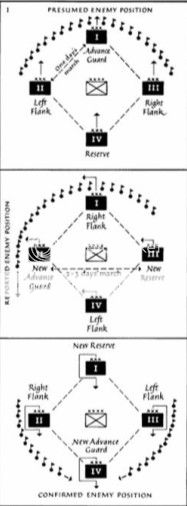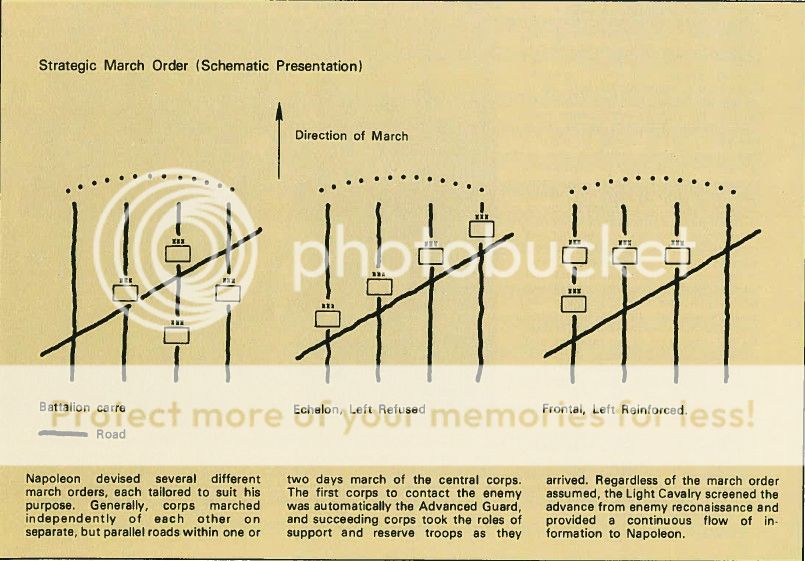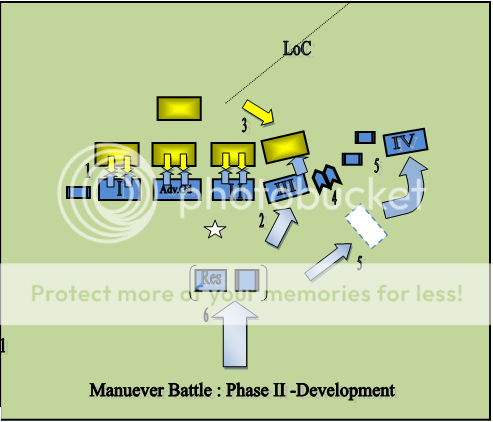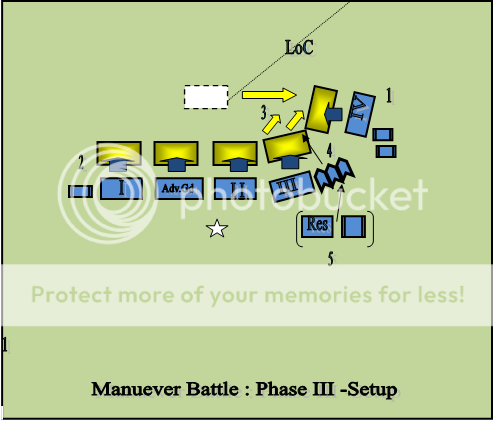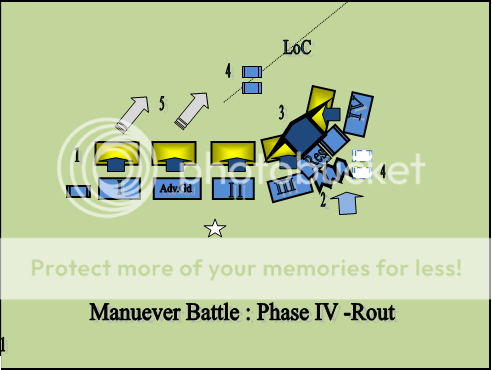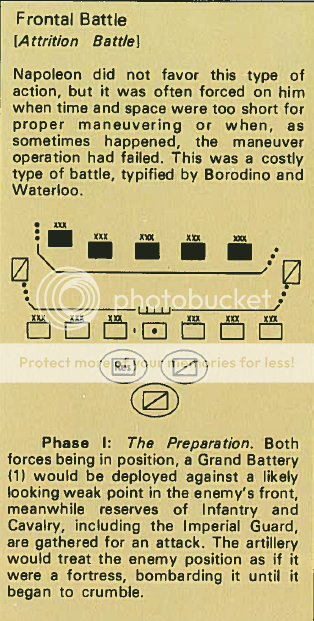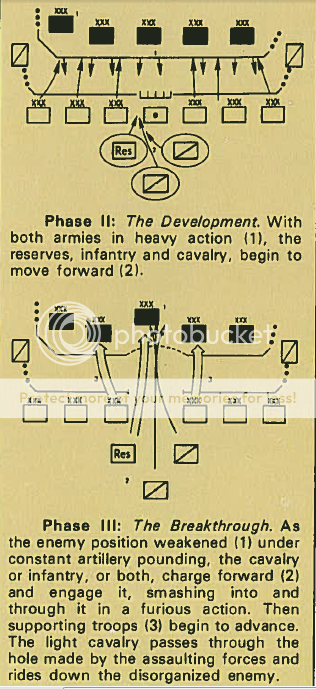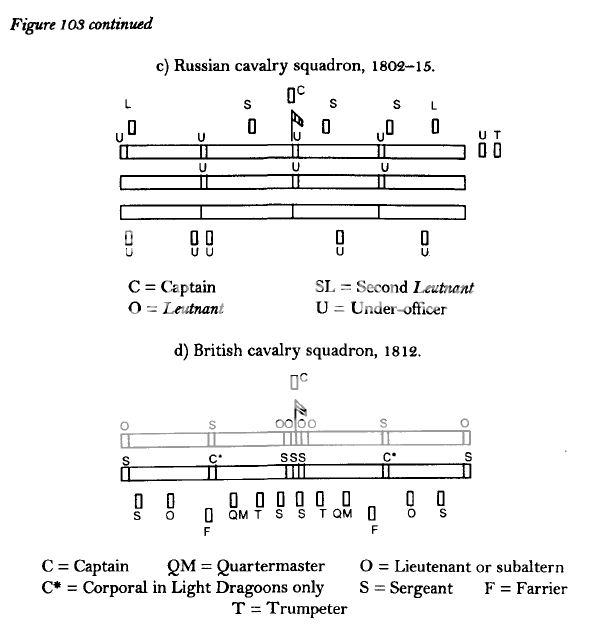PART II- NAPOLEON'S OPERATIONAL SYSTEMS OF MANUEVER

Now that a basic idea about the movement patterns of the french armies has been established we move on to
napoleon's methods of strategically checkmating enemy forces .Napoleon never openly disclosed systematic precise methods,prefering only indirect hints and maxims and during the napoleonic wars the
allies were unable to really decipher his methods for the most part.Post war 2 scholars -
Jomini and Von clausewitz came closest to understanding napoleon's way of war and both had an immense impact on commanders of the 19th centrury such as moltke,schlieffen,Robert lee and stonewall jackson etc.After a century of study by napoleonic scholars
3 systems have emerged as the templates upon which napoleon built his successes.
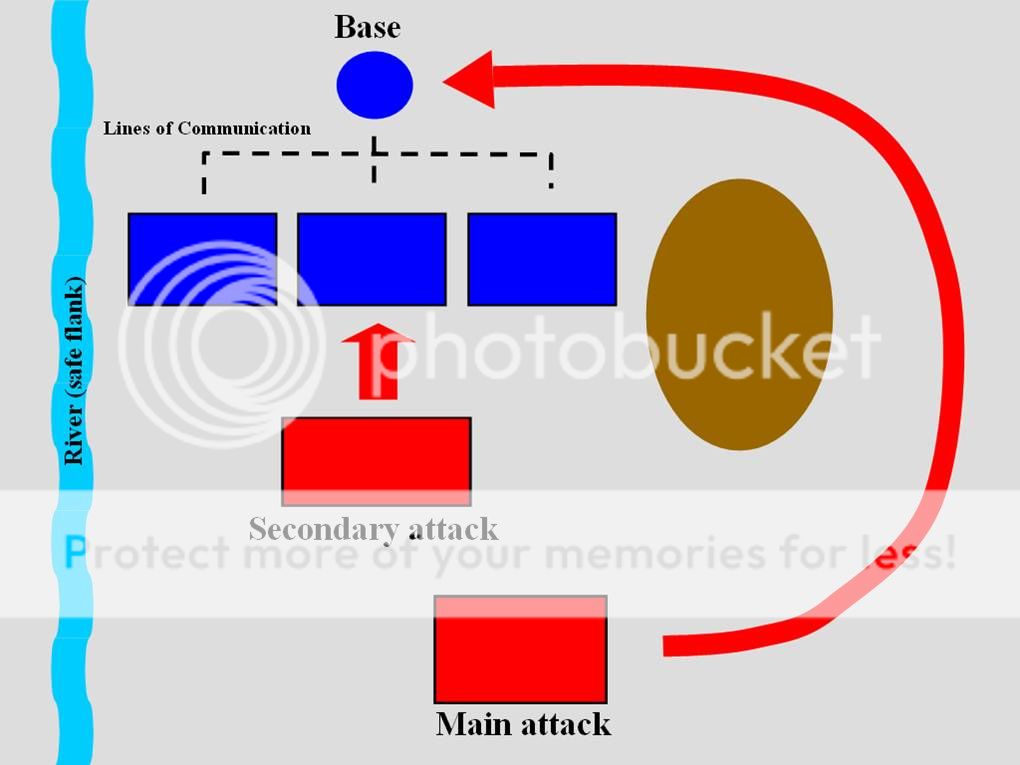
1) La Manuever Sur les Derrieres or Strategy of the Indirect Approach -
Napoleon's
Favourite Move used as many as
30 times between 1796 to 1815.In french it means literally -'move on to the rear'. In modern terminology as coined by Liddell hart the
Indirect Approach attack.
This was
Napoleon's strategy of Superiority/Equity.Used when he had parity or superiority in numbers against a
single opposing army.Its aim was to achieve a situation where the battle would be fought on bonaparte's terms.Bonaparte
disliked fighting a full frontal battle[to march and face the enemy fully arrayed in a starightforward tactical contest].This strategy entailed for a
secondary force [1-2 corps] to pin the enemy down in a feint attack,while napoleon force marched his main force through the nearest flanking route hidden by a cavalry screen and natural obstacle to arrive on the enemy's rear or flank and sever his line of communications.
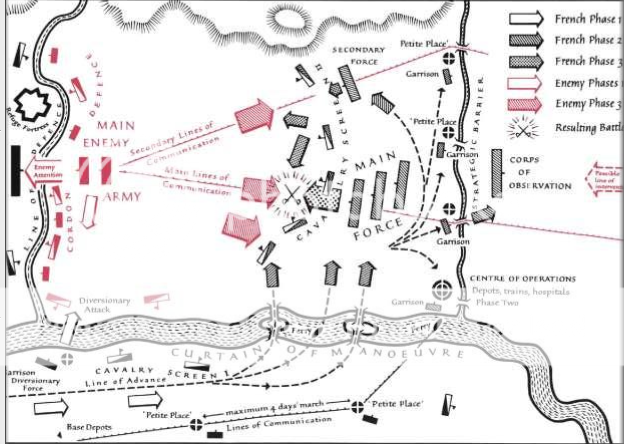
A
manuevre sur le derrieres operation in detail taking into account all possible variations.
On the extreme left is the
french secondary force that diverts enemy attention, any garrisons in nearby areas[optional and conditional] may also serve as diversions.Meanwhile
aided by a natural obstacle and covered by a cavalry screen the main army
force marches to attack the enemies lines of communication.[Note in this case its a river,it could also be a hill/forest.In 1800 marengo campaign the Alps served as the natural barrier,in 1805 ulm the black forest,in 1806 prussian campaign the thuringwald forest etc].This movement
required excellent mobility and very bold leadership and nerve.Once arrived on his enemies flank or rear napoleon whenever possible attempted to
set up a 'strategic curtain' based on a natural barrier.All river crossings would be blocked[blocking bridges required very few troops,1-2 regiments],thus
isolating his victim from reinforcements ,supply and retreat.If there was possibility of reinforcement a corps of observation could be set up to pin down any approaching reinforcements[This was a rare and conditional variation,as if napoleon was faced by 2 armies he usually reverted to his second move that will be discussed later].After establishing the strategic curtain
he then relentlessly advanced on the main enemy army from its rear or flank.Now the enemy had 2 choices
fight on unfamiliar ground or even worse be caught from the rear while engaged with secondary force[if he failed to detect the turning movement] or
surrender/flee with whatever forces could be salvaged out of the trap.
Now it seems all too easy on paper.So how would an enemy commander react to napoleon's attempt to turn his flank?
Advantages of the strategy are high.
Enemy would be surprised and his equillibrium shaken at the sudden threat to his rear.An enemy general could
attempt 3 things at this juncture.
1.If he was confident enough
he could continue to advance against the french secondary force.
However Napoleon was always careful to see to it that the
pinning force was strong enough to resist for a certain amount of time,and also that it was
covered by a river line or nearby fortress.[See the image,secondary force based on easily defensible riverline with fortress nearby for refuge in case of emergency].However the kicker is that
even if the enemy was successful in forcing his way through and advanced against the secondary force-he would still be
only more and more entangling himself into the trap.Going deeper and
deeper into hostile territory,cut off from provisions and a rampaging napoleon about to descend upon him from the rear.
2.He could
attempt to attack Napoleon's main force's overextended Lines of communication[LoC] in turn,trying to cut off the army that is attempting to sever his LoC.However to do such a thing the
enemy would have to split his army up piecemeal.One to engage the secondary pinning force in front.One to watch napoleon in the rear and finally the rest to conduct the actual operation.This dispersal would be fatal to the enemy,as napoleon's main army
would not oblige to being 'watched' and would descend upon the outnumbered forces with utmost speed and ruthlessness and next on the one engaging the original french secondary force in all probability annihilating both seperately.If napoleon thus linked up with his original secondary force his new lines of communication along the straight route though the secondary force would
make the allied attack on his previous LoC irrelevant.
In any case the french were accustomed to living of the countryside and thus
far less vulnerable to temporary disruption in supply than he european armies of the period.Napoleon during a campaign kept his line short and constantly readjusted them,focusing them on a few Centre of operations directly to the armies rear.[shown on diagram- petit palace and centre of operations denote french mobile supply depots changing places].Napoleon was thus
prepared to accept a temporary break in his supply columns if it meant placing the enemy army in a scattered and vulnerable position.
3.Finally,the opposing commander could
turn back in a hurry and march to offer battle to napoleon's main force.[the course of action depicted in the diagram]And this is playing Napoleon's game.Battle would be
fought on ground chosen by napoleon,and the enemy morale would be shaken and his formations scattered and disorganized by the sudden withdrawal.And he would still require to leave behind a force to contain the original french secondary force or risk being taken in the rear mid-battle.Note that
if the enemy army was defeated in such a position in the resulting battle,it would likely be destroyed as its retreat was cut off and french cavalry could conduct a total strategic pursuit.
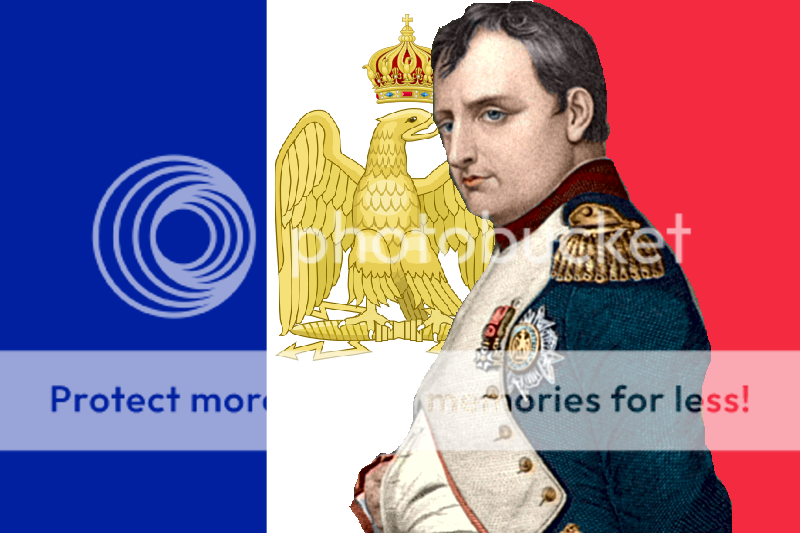
This move thus devised by napoleon was both
deadly and very flexible.Its requirements were to
seize the initiative at the outset,consistent bold leadership and movement and high mobility.
* An allied commander faced with this would
require early prompt intelligence of what was afoot[the french turning move]to withdraw or
luck.[in 1807 polish campaign bennigsen,the russian commander was aided by a captured french dispatch and was able to thus escape the trap about to close on him]
* Or they could refuse any prolonged engagement with the secondary force and
retreat continously denying any sort of big battle to the french.However this
meant usually surrendering key political areas including your capital to the mercy of the french without a fight and required
enormous strategic space.[Used by the russians in 1812 and was unique to russia due to her geographic advanatge.]
* Or the
single allied army had to be overwhelmingly big,so numerically superior to the french that even if it was divided piecemeal,the parts could face bonaparte's flanking force on relatively equal terms.[Allied strategy in last years 1813-1814]
The Indirect Approach attack is a manuevre often used in modern warfare ,though the tools have changed-the concept remains the same.Some of the most famous uses of the Indirect approach except napoleon are the numerous uses in the American Civil war -especially the
chancellorsville and peninsular campaigns by Robert Lee and Stonewall Jackson.[both students of the napoleonic style],By
von moltke[using planned system of railways for required superior mobility]in
1870 Sedan vs the french.
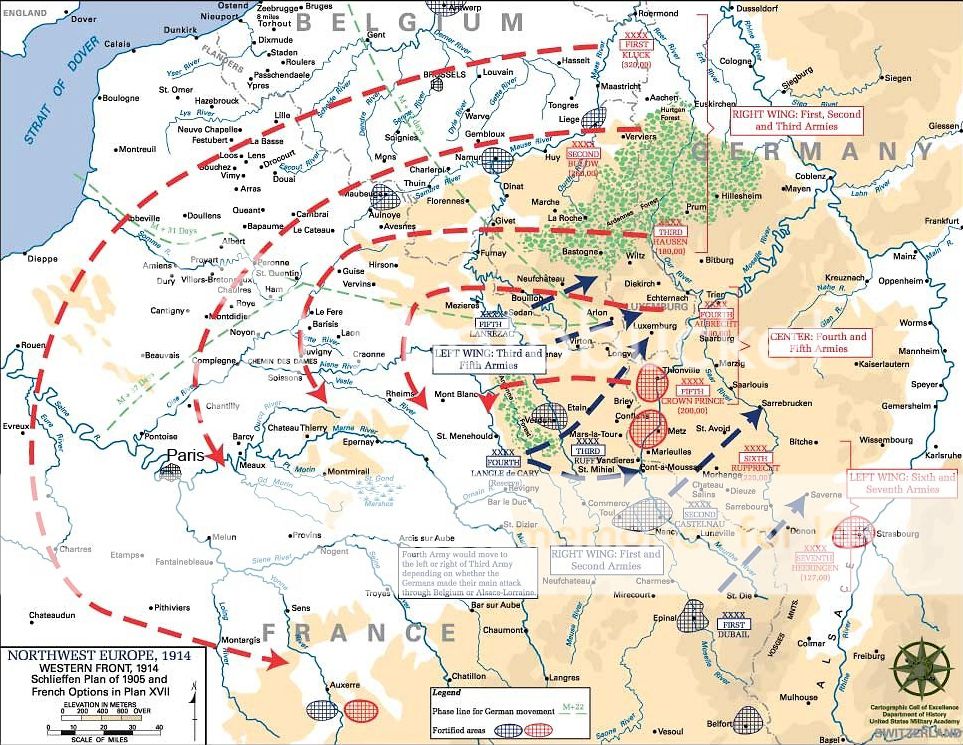
The
German masterplan in the West against France in WWI,the
schlieffen plan-laid down by the former head of the german general staff count schlieffen[like moltke a student of von clausewitz,who in turn fought in the napoleonic wars and studied napoleon,his 'god of war'.]
This is a classic manuever sur les derrieres almost identical to napoleon's famous Ulm operation of 1805.German divisions on the frontier holding the disputed border provinces act as bait and the secondary force,while bulk of the german army swings entering france wide by invading belgium and netherlands. The french who would eager to reclaim lost provinces of alsace and lorraine would advance on the secondary force,and be trapped from the rear against the alps and the rhine in an annhilation envelopment.It came within an hairsbreath of knocking france out,but
failed due to passive and hesitant leadership from the german high command and
loss of mobility [Foot infantry in later stages vs french emergency reinforcements in automobiles in
'Miracle on the marne']-thus
underscoring in both essential requirements.
It was also
employed in the eastern front in WW I against the imperial Russian armies with stunning success.A series of operations culminating in hindenburg and ludendorff routing the russian forces at
Tannenburg.[1914]
German Blitzkrieg of 1940 in france was a combination of the indirect approach and napoleon's second move.The
Inchon landing operations in the korean war and recently the 1991 gulf war saw its usage.
2) Strategy Of The Central Position :
''The art of generalship consists in when being inferior to the enemy overall,being superior to him on the battlefield'' - Napoleon.
Coming back to Napoleon,France was often at war with the bulk of Europe and many times
napoleon would be faced by not one but 2 enemy armies .Usually allied armies.In a single contest the french armies were among the largest in europe,but against the combined forces of 2 national armies
Napoleon would be at a overall numerical disadvantage.Thus the turning movement was not useful in such a scenario.For this Napoleon fell back on his strategy of central position.It was his
Strategy of Inferiority.
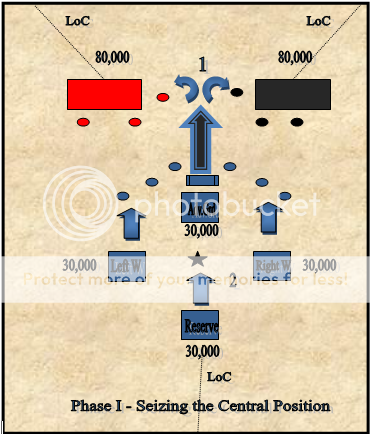
PHASE I :
Above diagram illustrates the initial position
.Overall the allied armies outnumber the french,but seperately the french usually outnumbered them[France being the most populous nation fielded large armies].
1.The french would
seize the initiative and march to
prevent the unification of the allied armies.First napoleon collected all available intelligence and
determined the hinge or weak joint between the enemies strategic dispositions.This joint may be a lightly defended enemy position which
could be rapidly overrun and occupied in a surprise attack or in most cases simply a geographical position the french would occupy by rapid movement even before the allied armies had a chance to unite.
Shielded by a cavalry screen French advance guard and elements of the heavy cavalry reserve
achieves a crash concentration and seizes the 'central position'.
2.Rest of the formations of the battalion carre -The wings and reserve advance and
mass on this point.Bonaparte has now
succeded in interposing his army between the 2 enemy forces.They now have to operate on 'exterior lines'[Greater distance from one flank to another for the whole of the allied forces] while the
french using 'Interior lines' require shorter distances to travel.The advance guard and cavalry meanwhile pushes back the enemy cavalry patrols.The star indicates napoleon's position,probably travelling with the imperial guard.[Guard artillery performs role of army artillery reserve]

PHASE II:
Now having seized the central position,it would be highly risky to turn the whole french army on one allied force as the other allied army could strike the french from the rear and napoleon would be crushed between 2 numerically superior armies.
1.To prevent this possibility,The
2 wings move to engage the respective allied armies pinning them down.Napoleon now proceeds to isolate his first adversary confident the other wing can hold for a limited amount of time.The first target is
usually the army closest to the central position.
2.The french light cavalry
forms a screen severing all communications between the seperated allied armies.At this point both allied commanders possibly believe they are facing the main french attack.
3.The french
reserve splits in 2 .
4.One part of the reserve
moves to form up on the flank of the right wing thus extending the french line to match the allied one.This new arrival
may prompt the allied commander to shift some of his reserves to this wing.
5.The French
advance guard now arrives and makes a flank attack on the other allied flank.This coming in quick succesion to the french reinforcement of the right wing,is sure to confuse to enemy commander
.In desperation he releases his final reserves and extends and bends his right flank to contain this new threat frontally.
6.The rest of the reserve coupled with french heavy cavalry reserve and guard artillery
form a 'mass d' decision' ,now are unleashed on the weakened bent of the right right flank to complete his destruction.The allied commander
with no more reserves can't respond effectively.
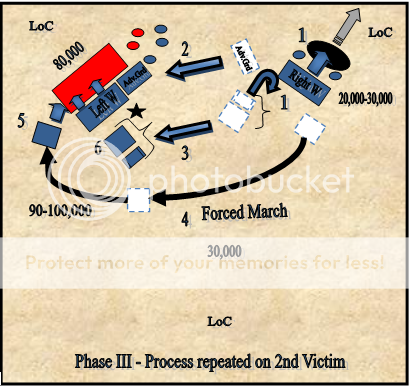
PHASE III :
1.The French right wing and light cavalry[formerly acting as screen]
continues heavy pursuit of the defeated allied army.While the mass of decision after doing its work regroups .
2.Advance guard
turns back and marches to form up alongside the near exhausted french left wing engaged with the other allied army thus reinforcing and extending the line.It may prompt allied commander to disptach some reserves in this direction.
3.The former
mass d' decision marches to the aid of the other french army.
4 and 5.The other half of the reserve previously acting as flank reinforcement in the earlier battle now
force marches the greater distance and arrives suddenly at the left flank of the second allied army,thus playing the role that the aldvance guard played in the first battle.
6.In the
same sequence,final allied reserves are expended to meet this new threat as allied commander predictably bends his right .
Again the mass of decision and cavalry reserve are unleashed on the hinge to complete the rout.
Thus by brilliant operational manuevering an inferior french force overall could concentrate and
achieve battlefield numerical superiority in both cases in a classic exapmle of a 'defeat in detail'.The requirements for the central position tactic was again- '
Seize the initiative,bold movement and leadership and finally reasonably able subordinates[who could pin an army in place for a certain time and also carry out the pursuit of the defeated army with vigour to prevent it regrouping [something that happened at waterloo-Marshal grouchy failed to properly pursue prussians under blucher resulting in him suddenly appearing to wellington's aid midst-second battle].
Drawbacks of this type of battle were that napoleon couldn't be present in both sectors in person,and more importantly-the need to immediately turn back on the second allied army meant that a
total pursuit of the first was not possible,as in the case of a
manuever sur les derrieres battle,and
chances of a decisive success were lower.After thes econd battle too french army was likely to be exhausted from 2 battles and incessant marching within a very short period of time and
pursuit would not be as effective.
The Strategy of the Central Position was used several times in the
american civil war,as well as being used on a grand strategic scale by the
germans in WW1 and israelis in 1967 and 1973.Rommel used it in his tunisian campaign.
The german blitzkreig of 1940 in France was briliant combination of both the central position and the indirect approach .[i will not expand on this as next battle report will do so]
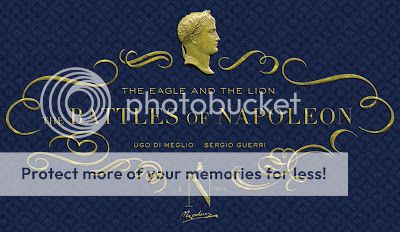
Strategic Penetration -
Napoleon's third move was simple and was often a launching board for his 2 other techniques.The strategic Penetration technique was used when napoleon found the enemy holding a broad front
cordon type defensive line.The french
achieved a rapid concentration at one point and broke through the enemy front in a narrow frontage.Once inside the enemies lines napoleon would the commence operations using his above 2 techniques.This method in reality was still one in development,because campaigns at this time were still decided by field battles the 3rd technique alone would not be decisive yet.However a century later in an era where the broad front trench warfare was norm,it would be the
germans who would fully develop it and give it its ultimate shape.In form of narrow panzer spearheeads to rupture an enemy front followed by rapid infiltration,exploitation and eventual encirclement in their own unique way ['
kesselschlacht'-next battle report]what became known as blitzkrieg.
Strategic Pursuit - A
key feature of napoleonic warfare and one of nappy's cherished goals was the total annihilation of an enemy army after a battle by strategic pursuit with cavalry.This tall ask was however achieved completely only twice- in 1806 prussia and in Italy 1796.
Napoleon formulated his methods of war before 1796 and all these would on frequent display in 1796 campaign,though
initially in a crude embryonic fashion.As they were refined over the decade,
they would be unleashed on the hapless armies and generals of europe.
A key thing to note about these strategies are their
relative modernity.This was the
first real systemization of operational strategy in military history and forms
napoleon's legacy.
NEXT: Napoleon's Grand Tactics























